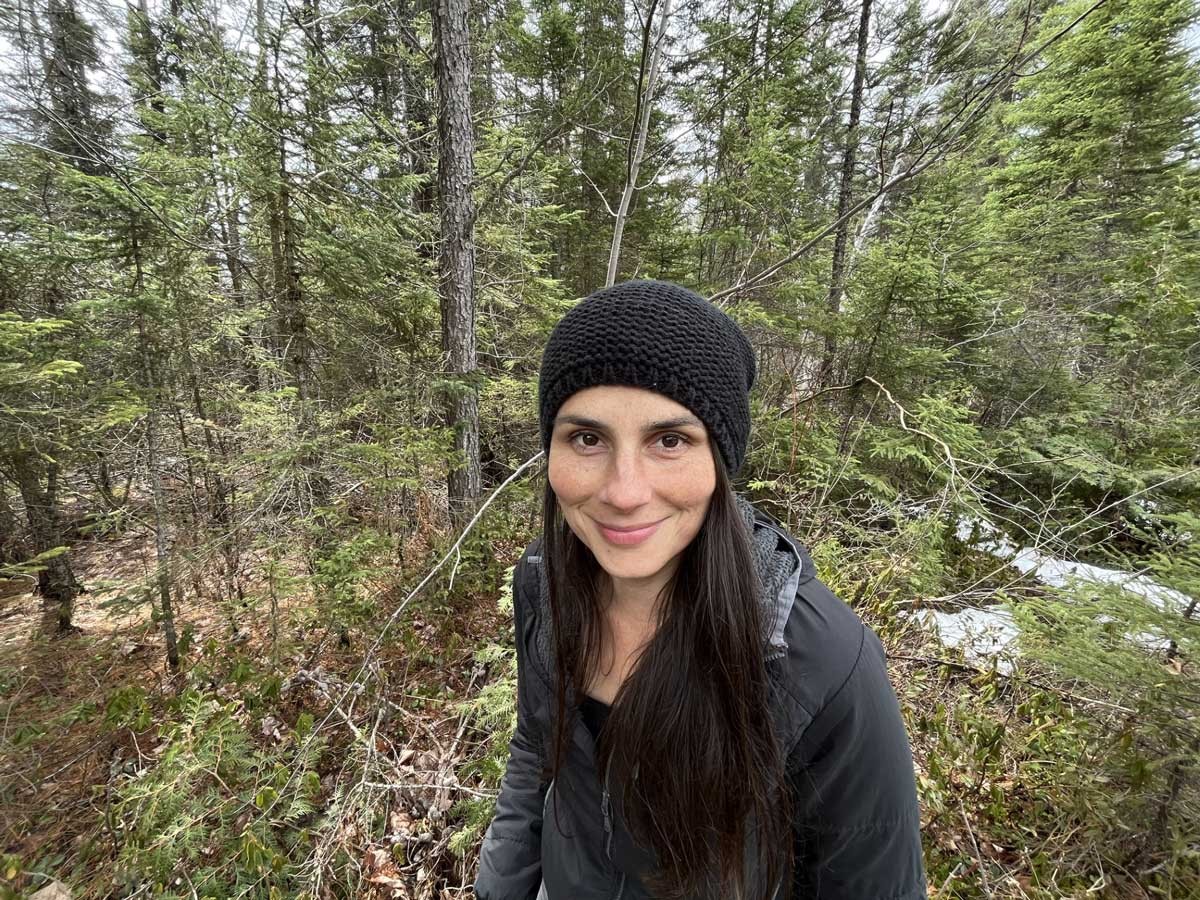Areas that have been continuously stewarded by Indigenous people are often biodiversity hotspots where wildlife, humans, and nature thrive in balance with one another. That’s according to Robin Michigiizhigookwe Clark, who has been newly appointed to the Michigan Natural Resources Commission.
Clark is the first Anishinaabe woman to serve on the commission and was appointed by Governor Gretchen Whitmer in December 2023 for a four-year term that began in January. The commission is a seven-member board that sets regulations for fishing, hunting, and trapping in Michigan. In her role, Clark says she wants to focus on the impacts of current harvest regulations on wildlife populations including the number of hunting and trapping licenses issued.
“In recent decades, there’s been [a] growing understanding of the significance of Indigenous knowledge when it comes to ecology and biodiversity conservation. We’re everywhere,” she says laughing. “There are 12 federally recognized tribes [in Michigan]. There’s all sorts of urban Indian populations. And so we really do have rich knowledge and relationships to draw from that can inform natural resource management, including harvest regulations.”
Clark is a member of the Sault Ste. Marie Tribe of Chippewa Indians and lives with her family in the city of Sault Ste. Marie, on the border of Michigan’s Upper Peninsula and Ontario. She hopes to bring some of the Anishinaabe ways of relating to wildlife to the table at the commission’s monthly public meetings.
“I’m new and just getting to know different sportsman’s groups… and a common theme is that folks will often call fish and wildlife a ‘resource,’ which is kind of a bummer because in my community, and a lot of Indigenous communities, we’re not talking about resources. We’re talking about relatives,” Clark says. “Fish [and] wildlife, in our teachings, these are actually elder beings who have provided for human beings over the generations. So, I will use the term ‘resource’ now, but it’s a little cringy,” she laughs.
She adds about why there tends to be so much biodiversity in areas stewarded by Indigenous communities, “It’s really hard to completely wipe out a species from an area or even endanger them if you understand that species to be an elder relative.”
The commission has only had two meetings so far this year, Clark says, mostly for an initiative to manage deer populations in the Upper and Lower Peninsulas spearheaded by the Michigan Department of Natural Resources.
“There are very different deer herds in the Lower and Upper Peninsula because of the different forest and ecosystem conditions as well as winter severity and predator populations,” Clark explains. “The initiative is just bringing together a diverse group of citizens to look more holistically at how the deer population is doing and what are some management needs moving forward.”
The Michigan Natural Resources Commission is also reviewing fur-bearing harvest regulations. Fur-bearers are animals like martens, bobcats, foxes, and coyotes that are hunted or caught for their fur. According to Michigan regulations for 2023-24, there is no limit on coyote and fox trapping, while the cap for fisher and martens is two bags per resident fur harvester.
Clark holds both a Bachelor of Science in environmental studies and a Master of Science in community, agriculture, recreation, and resource studies from Michigan State University. As part of her doctoral studies in forest science at the Michigan Technological University, she worked with the Sault Tribe and Bay Mills Indian Community to research Anishinaabe peoples’ relationship to giizhik, or northern white cedar trees.
The tribes utilize many parts of giizhik, according to Clark, including the leaves, needles, bark, and wood.
Besides access changing with the privatization of land over several hundred years, she found that these groups generally take a more responsible and respectful approach to harvesting cedar. This includes only harvesting with a specific use in mind and considering over harvesting can affect other animals and plants in the ecosystem.
“In birch bark canoes, the frames are also made of cedar wood,” she says. “But harvesting protocols are always focusing on minimizing harm… so you’re harvesting some of the bark of a tree at a particular time in order to best allow that tree to heal. You’re never killing the tree and you’re spacing out your harvest across the land. You’re considering not just you as the individual, your family, or your community, but you’re also considering the birds, the animals, and insects that also rely on giizhik… looking out for other beings, non human beings.”
Clark began working as the director of the Sault Tribe’s Department of Natural Resources, overseeing environmental, fisheries, and wildlife management programs last December. She also served on the Inter-Tribal Council of Michigan for 10 years developing natural resource and environmental health services for tribes across the state.
Sault Tribe Chairman Austin Lowes said in a statement that Clark’s passion for sustainable forest management brings an important voice to the commission in addition to her representing Anishinaabe people.
“Her combination of academic and real-world natural resources management experience makes her an ideal representative to serve on the Commission,” he said. “As the only Anishinaabe person and the only woman serving on the commission, she will also provide an important perspective on Native American culture and treaty rights that has not previously been present within that body.”
More information on the commission and its meetings, which are open to the public, can be found at michigan.gov/dnr/about/boards/nrc.
Subscribe to Metro Times newsletters.
Follow us: Google News | NewsBreak | Reddit | Instagram | Facebook | Twitter







